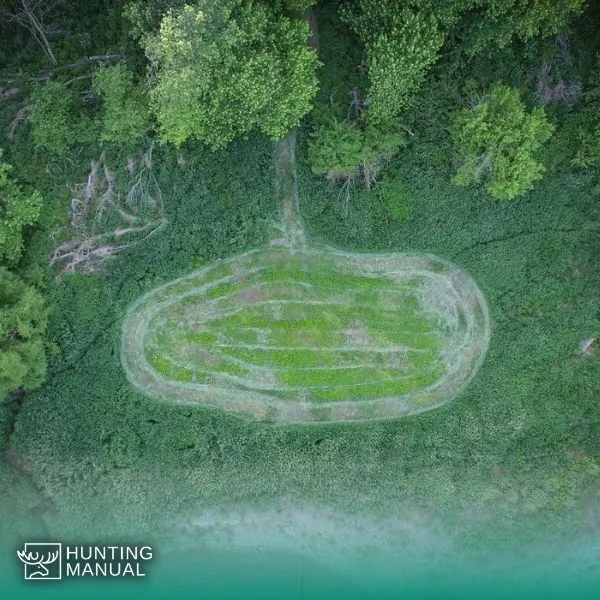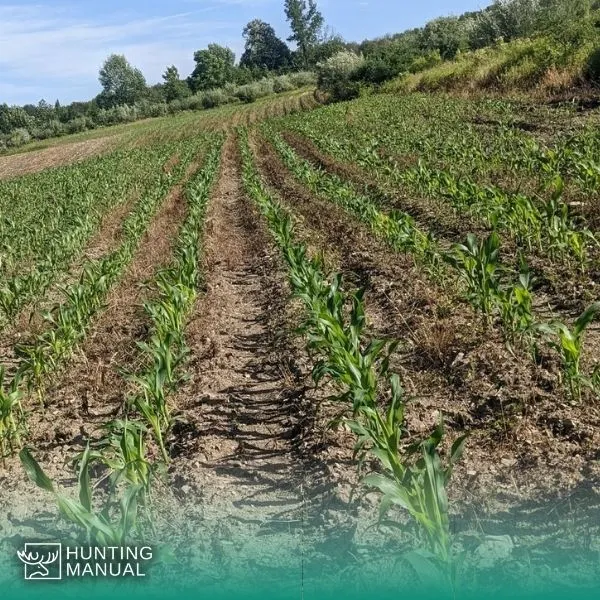Bucks have an exceptional sense of smell which is their superpower as well. It helps them smell danger of predators. Knowing how far can deer smell and factors that improve its ability is key to success for a hunter. As compared to humans or even other animals, deers are way ahead and can smell danger from almost half a mile or 0.8 km.
When comparing the sense of smell of deer, let’s put it this way. There are roughly 297 million olfactory receptors in a deer’s nose. Dogs have 220 million olfactory receptors whereas the human nose merely consists of 5 million.
Since we all have dogs as pet animals and even for security we know how quickly they can smell the danger. Deer have better odor detecting capabilities than dogs. Though they do, not as impeccably as a deer.
Generally, a deer can smell anything or anyone from a distance of half a mile. Moreover, the intensity of its smelling sense could lie anywhere between the range of 500 to 1000 times more when compared to a human.
Because of the lateral and broad nostrils, deer can smell directionally. This helps them to reach the exact location from where the smell comes. This is known as stereo olfaction which allows deer to readily determine source and direction of the smell.

For deer, unusual sounds are not as severe as smelling. When a deer hears something off, it becomes active and looks around for confirmation of danger. On the contrary, the sense of smell confirms danger and they immediately leave the area.
Last month, I was discussing deer’s smelling sense in the Hunting Manual’s community. A few questions were raised by beginner hunters. The most common questions were how far can deer smell urine of doe and human? To my surprise, most hunters still believe that they can’t hide their odour from deer senses. Another common question was how far deer can smell water and food including apples, corn and peanut butter?
How Far Can Deer Smell Food?
The ability to detect the smell of food and its source is extremely crucial for the deer to survive. They pinpoint the food source using the sense of smell and plan a journey during safer hours to steer clear of the potential predators.
While bucks can smell doe’s excrement from a half mile away, the case is a bit different when it comes to food sources. According to our hunting experience and available data, bucks can sense the smell of food from a distance of ¼ miles (0.4 km). As soon as they smell the food, they will keep proceeding until they figure out if there is actually something to munch on for them or if it is only a trap.
Let’s find out about a deer’s ability to smell different food:
Corn and Deer Smell
Deers love munching on corn and can smell it quickly from within a mile. It is a tasty treat and is full of starch which is a basic nutrition requirement for bucks. It isn’t possible to figure out the actual distance from where this game animal can smell corn.
When mapping out a food plot on your property, use wind direction as a tool to map out possible locations for food plot placement. Just like hunters, these intelligent animals use wind to their advantage and detect food location from the smell that wind carries.

Do Deer Smell Peanut Butter?
Peanut butter is among the top favorite foods for deer and hence is a great bait. It is an economical choice for deer attractants and can be used to lure doe. Experienced hunters often use doe estrus to lure big bucks. This is advanced level risky hunting technique. For that, knowing how to use doe estrus, wind and understanding deer psychology is crucial.
According to my recent speculation on using peanut butter to attract deer, it is safe to say deer can smell peanut butter approximately a mile away.
Every game animal including elk, bear, pigs and deer use nostrils to detect threats, food and other members of the species.
How far away can deer smell apples?
Bucks are attracted to apples. In certain regions, many hunters use apple trees on the property. Most hunters use soft mast fruit trees which complement the nearby food plot on their hunting property.
Deer can smell apples from a few hundred yards. This helps them to locate the soft mast source even during harsh weather conditions. Apple trees are great for soft mast. Apple trees are specifically used by tree stand bow hunters on private lands. Soft mast food source along with hard mast retain bucks and doe’s on the property.
Hunters use various apple tree varieties and plant them randomly each year. That means 3-5 trees or more each based on land area. Mapping the wild orchard is necessary for proper, fast growth and pollination. For that, plant apple trees 25-50 ft. apart. Moreover, instead of planting all at once, plant some trees each year.
Why variety of apple trees? Because each of them produce at different time of the year. Some bare fruit in August, others in September, October and November. This way, you will have plenty of time to retain deer on your property. Pollination is another factor which helps

How far away can a deer smell you?
When the weather conditions are normal and a human is not trying to hide its odor, a buck can smell them from a safe distance of ¼ miles. This is the foremost reason why deers escape easily before the danger gets any closer to them.
In case deer get your smell. They will remember where you were and can smell you easily from a few hundred yards. When buying a large area on hunting property, make sure to know about the neighbourhood and people living nearby. If there are humans on your property, deer will definitely notice it and will alter their usual course of bedding and feeding. One way is to set up trail cameras on entry points to monitor movement and activity on your property.
Deer Smell – Direction of Deer, Wind Effect and Thermals
When deer hunting, knowing wind direction is key to protect yourself from being busted. For that, use foot prints of deer movement on trail. In this way, you will know where they have moved to, most recently.
Wind is a major factor in all kinds of terrain especially for bow hunters. But, in hilly areas where there are steep slopes and dense forest, thermals play a huge role as well. Thermals are air current that move upward from valleys in morning and downward in evening
How Well and How Far Can Deer Hear?
Buck’s ability to hear isn’t as great as their ability to smell but, they still have an amazing one. According to the readings of Heffner’s audiogram, deers can hear best between the range of 4 to 8 kHz. This range is pretty much similar to that of a human being i.e., 2 to 5 kHz.
As far as deer’s hearing ability in feet is concerned, they are believed to hear the hooves of other deer passing by from a distance of at least 250 yards. When it comes to humans, the distance doubles, and deers can hear soft foot humans from a distance of 500 yards away.
Other recent studies have shown that deers are capable of hearing high frequency sounds. Moreover, they can hear a lot better than humans. Consequently, for low frequency sounds, humans are better compared to deer.
Bucks are active creatures and pretty much aware of their predators all the time. Their sense of smell and hearing help a lot in escaping the danger approaching them.
How far can deer hear rattling?
Bucks use their antlers in aggression while encountering a conflict with another buck. The sound of rattle can be heard by other members of the species and most of them respond to it. Bucks do it more often during rut season as they are highly aggressive throughout rut and rattling helps in calling out the doe’s.
Mimicking the sound of rattling using fake antlers or rattle bags is a common practice by hunters. They do so to pump out the deers of their hideouts. A deer can easily hear the sound of an aggressive rattle from ½ miles away.
Generally, the best time to start a rattling as a call for deer is when the pre-rut is about to end. It is suggested to continue rattling especially when the rut period is at its peak. The breeding period peaks from November till January.
Conclusion
Deer use smell to trace danger, mating partner and food. Having all that said, a deer’s smelling ability is way superior to its own other senses including its hearing. Despite having big ears, deers can hear better than humans would. However, it isn’t quite powerful when compared to its sense of smell.
Since we all know how far can deer smell, here is another tip. Knowing range to various locations around your hunting spot is key. For that, a best rangefinder for hunting provides accurate data with one click.
Frequently Asked Questions (FAQ’s)
A deer’s ability to smell is its best sense out of all. Having more olfactory receptors as compared to predators, the buck’s smelling sense is considered its superpower. It helps in finding food, other deer and a threat.
Deer are highly responsive to the sound of rattles but it could take some time to attract bucks. Try rattling for a few seconds after an interval of 20-30 minutes. The bucks would likely come out to the 3rd or 4th sound of rattling.

Leave a Reply